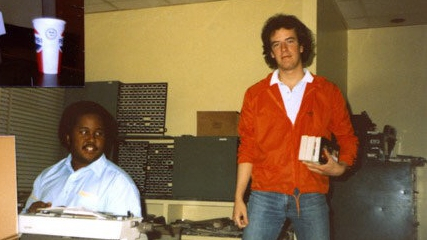
China
15:59, 07-Dec-2018
Development of China's automotive: Then and now
Updated
15:28, 10-Dec-2018
By Sean Flynn Callebs

Editor's note: Sean Flynn Callebs is a reporter for CGTN's America. The article reflects the author's views, and not necessarily those of CGTN.
One of the benefits of my job is that every now and then I stumble on to an assignment I know I will never forget.
When China began its reform and opened up to the rest of the world, I was a kid, living in Huntington, West Virginia. That is about as far away as one can get (on every level) from China's capital of Beijing.
In 1985, when then U.S. Vice-President George H.W. Bush was in China to watch the first Jeeps roll off assembly lines, I was a skinny, long-haired kid starting my career in TV.
Everything I knew about China, I learned from the high-level meetings between former U.S. President Richard Nixon, and Chinese leader Deng Xiaoping. In short, ping pong and pandas.

Former U.S. President George H.W. Bush shakes hands with a Chinese citizen. /CGTN Photo
Former U.S. President George H.W. Bush shakes hands with a Chinese citizen. /CGTN Photo
Fast forward to today, my first assignment on the epic Real Time China caravan tour, was to chronicle the driving situation in Beijing.
A few decades ago, only one in five people lived in urban areas in China. Most lived near the factories or farms at which they worked. Bicycles were all people needed. But as China grew, rapidly, and so did the demand for cars. Today, there are about 22 million people in Beijing and at least 5.2 million cars.
Beijing has a rich recorded history that dates back more than 3,000 years, but no city is built to hold these many people and these many vehicles without problems.
Einar Tangen is a frequent guest expert on CGTN. He spent years in the U.S. Midwest specializing in economic development. Tangen points out that Beijing (and China) are at this point victims of their own success.
Growth has been exponential. Everyone in China seemingly wants to live in Beijing. And, they want cars. Still, the average person sits in traffic in Beijing about 286 hours a year, and that is a lot.

Sean Flynn Callebs (R) poses for a photo. /CGTN Photo
Sean Flynn Callebs (R) poses for a photo. /CGTN Photo
But no matter how bad it can be while driving during rush hours, there is a raising hope that perhaps the worst has passed, and the congestion will ease if only slowly.
Tangen points out that by having an "odd-even license plates system," meaning some days certain vehicles must stay off the road, Beijing is removing between 10 and 12 percent of the cars and trucks from the highways every day.
Also, all car manufacturers in China, domestic and foreign, must produce a certain number of electric and hybrid vehicles each year. Combined, the policies will hopefully ease the bottlenecks, and the pollution cars bring.
But if you stop and think about, going from a nation of millions and millions of bikes, to millions and millions of cars in one generation is staggering.
China now has 136,000 kilometers of highways, enough to circle the earth more than three times.

Photo of Beijing's traffic during rush hour. /CGTN Photo
Photo of Beijing's traffic during rush hour. /CGTN Photo
When the reform and opening up policy began, there was debate over whether roads and bridges replacing ferry boats were a good idea.
In the coming days, my colleagues and I will take you through much of China. Among other locations, I will get to see Zhuhai, a city in southern Guangdong Province. If you have followed the news at all you know, there is a construction marvel that recently opened connecting Hong Kong, Zhuhai, and Macao, a bridge that spans 55 kilometers.
When people talk about development in China, whether it is construction, development of electric cars, or the desire to reduce pollution, they frequently refer to something called "China Speed."
Poverty is being alleviated, and more and more people are living in major cities. China has a large, motivated workforce, and a government that plans well and can offer something other nations can't - continuity moving forward.
Our "Real Time China Tour" is going to be an amazing journey. Stay tuned for more adventures and opportunities to learn from the stories we bring to you.
One thing is for sure, today people know China means much more than ping pong, and pandas.

SITEMAP
Copyright © 2018 CGTN. Beijing ICP prepared NO.16065310-3
Copyright © 2018 CGTN. Beijing ICP prepared NO.16065310-3